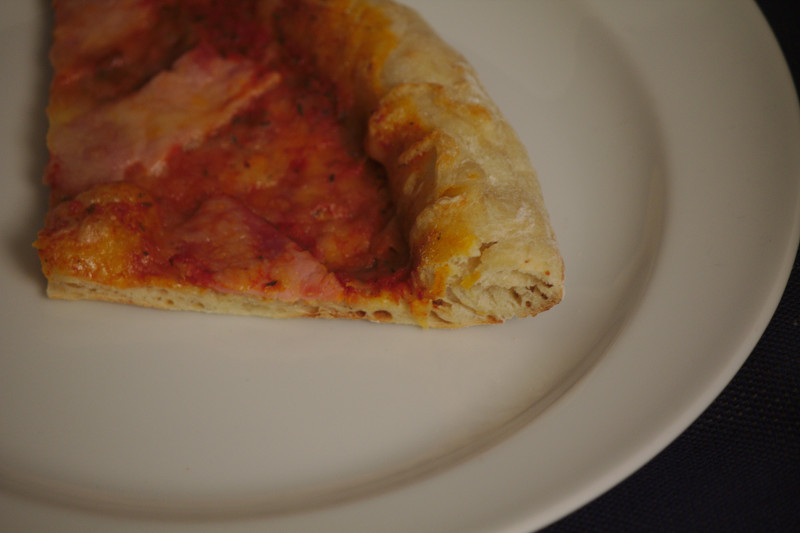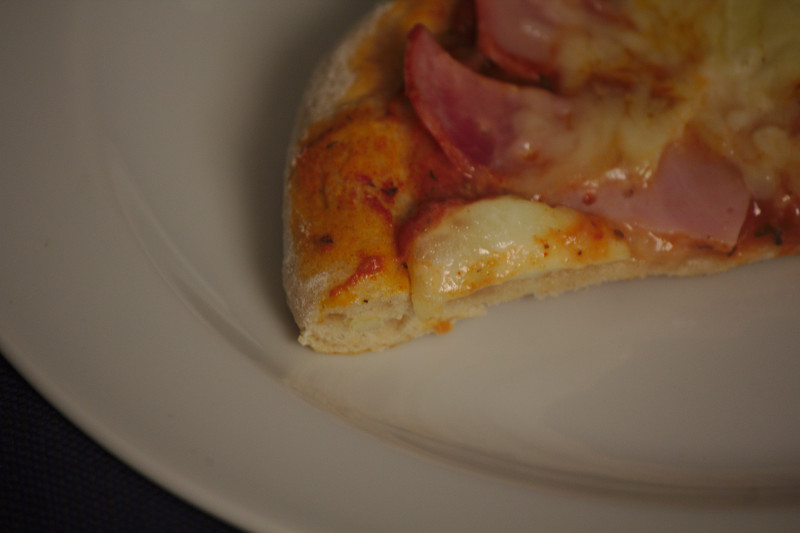A colleage asked me, how do you get rustique, nicely browned pizza? It's simple. You need sugar in the dough, because sugar browns. How do you get sugar? It's easy. Enzymes convert starch to sugar (brewers know this). How do you get enzymes? Easy. Yeast produces them or you could add them artificially.
So you have multiple choices. The first is to use a poolish, that is rich in enzymes. The second is to use active baking malt to add these enzymes artificially.
In Germany active baking malt may be ordered via Teltomalz, which during the time of the GDR supplied baking malt to all bakeries of the country. The standard roll recipe called for baking malt to improve the appearance and taste of the roll. They're still producing it, and you can order from them via ebay. Other than that, I didn't find a lot of producers of this item. Most brewing shops sell dry malt extract, i.e. preconverted malt. What we want however is a powdered dry malt that has its enzymes intact.
So with this in mind, I'm setting up two experiments. I'm not going to try to bake 15 pizzas today, so the Teltomalz alternative has to go, at least for now.
- MC at home Poolish: 175% hydration (is this a typo?) with 0.2% yeast.
- Standard Poolish: 100% hydration with 0.2% yeast
The temperature in my kitchen was a mostly constant 19 degrees Celsius.
MC at home
I'm strictly following their recipe here.
Started: Thursday 7PM. Mixed all components of the poolish together.
Impression at friday 7PM: extremely liquid. After the first night this evokes the impression of a fermented drink.
After adding the poolish to the dough proper, this feels about right. Hydration is a little on the high side, however the recipe calls for adding flour in case the dough sticks to the wall of the mixing bowl, which alleviates this problem. Feels good.
After 24h hours: Saturday 7PM. I took the dough pieces out of the fridge an hour in advance. The dough was extremely elastic and rather hard to get into shape.
Standard Poolish
There are some consideration for the standard poolish here. Weekend Bakery advises 100% hydration for this poolish. They also detail the amount of yeast vs. the poolish needs to develop. Their pizza article is here and it conforms to the poolish recommendations made earlier.
Started friday at 7 AM. After 16 hours it looks firm and spongey. Actually most recipes call for a shorted period of poolish fermentation so i put it in the freezer for the bake-off on saturday.
Saturday at 6 PM. I mixed 200g Poolish with 250g whole wheat flour and added 120g water and the necessary ingredients. After that I put the dough in front of the window. We'll see if this works, the first impression is that the dough is too dry. At one hour in the dough does not show any signs of growing.
After two hours the dough increased noticeably in size. The dough is noticeably more brittle than the MC dough, but very malleable.
Comparison
The hydration level in the standard poolish seems to be a little lower. The reason could be the whole wheat flour I used.
The first picture is the MC poolish.

This is the standard poolish.

Once you get to form the MC poolish you can get nice, very thin crust. On the other side the standard poolish is a little thicker and fuller. I do however find that it tastes somewhat more interesting, if you want to taste your pizza a little bready.
Did we get a nice browned crust? No. This may be because the heat was not all that high. We'll try again next month.
Finally I froze two balls of dough and two rolled out doughs and we'll see the results next week.
Recipes
High hydration poolish
(Adapted from Modernist Cuisine at home, German Edition)
- Make a poolish with 175% hydration
- 100g wheat flour
- 100g whole wheat flour
- 350g water
- 0.4g dry yeast
Let it ferment for 24 hours at room temperature. The combine 312g poolish with:
- 500g flour
- 200g water
- 48g honey
- 15g salt
- 10g gluten
- 1g dry yeast
Mix on medium for 5 minutes, then let it set for 10 minutes, then mix again for 5 minutes. The dough should be sticking to the bottom of the bowl, but not to the walls. I had to add about 5 tablespoons of flour to reach this result. You'll have to try and see how much flour you'll have to add.
Now let it sit for 24 hours in the fridge. Take it out of the fridge one hour before baking.
For the recipe of the standard poolish see here.